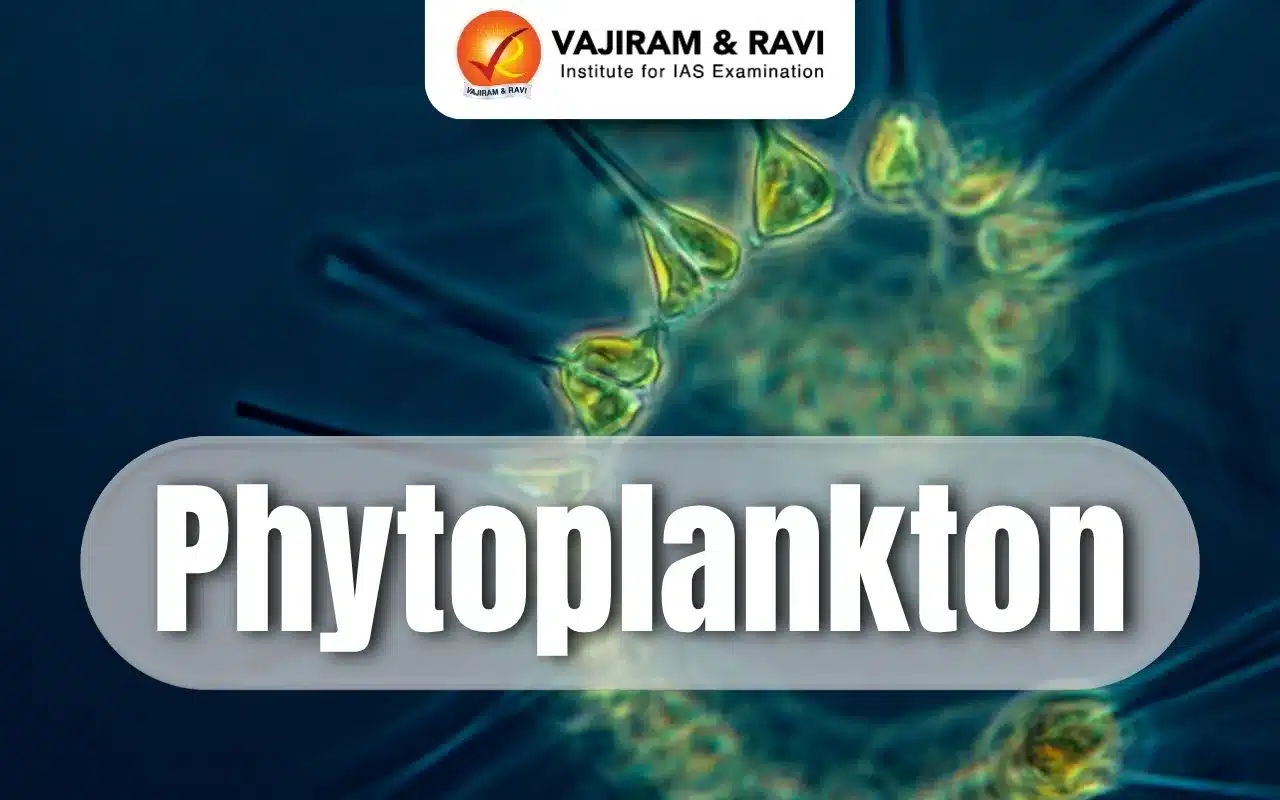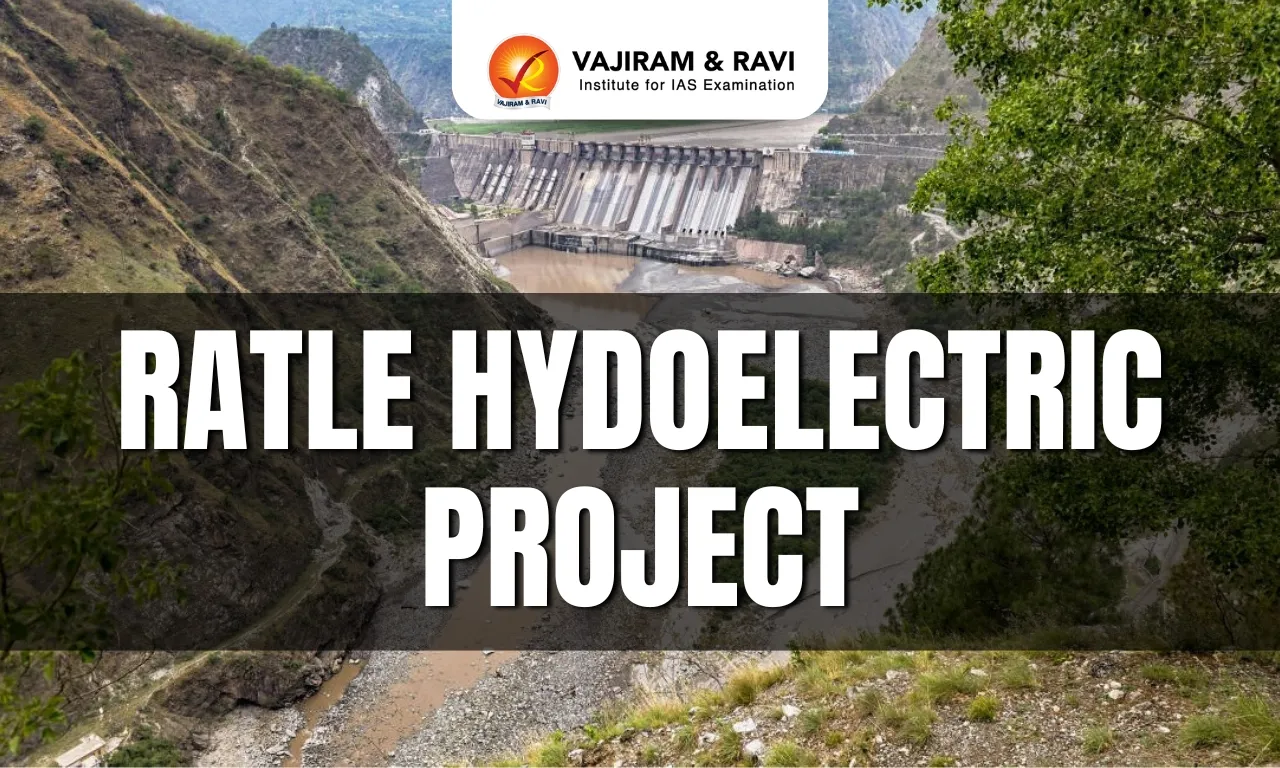Phytoplankton Latest News
According to the researchers, from across institutions in the U.S., iron released due to human activities enhances spring phytoplankton blooms as well as speeds up the rate at which nutrients are consumed.
About Phytoplankton
- Phytoplanktons are microscopic plants, but they play a huge role in the marine food web.
- Phytoplankton, also known as microalgae, are similar to terrestrial plants in that they contain chlorophyll and require sunlight in order to live and grow.
- Most phytoplankton are buoyant and float in the upper part of the ocean, where sunlight penetrates the water.
- They require inorganic nutrients such as nitrates, phosphates, and sulfur which they convert into proteins, fats, and carbohydrates.
- The two main classes of phytoplankton are dinoflagellates and diatoms.
- Dinoflagellates use a whip-like tail, or flagella, to move through the water and their bodies are covered with complex shells.
- Diatoms also have shells, but they are made of a different substance and their structure is rigid and made of interlocking parts. Diatoms do not rely on flagella to move through the water and instead rely on ocean currents to travel through the water.
- In a balanced ecosystem, phytoplankton provide food for a wide range of sea creatures including shrimp, snails, and jellyfish.
- When too many nutrients are available, phytoplankton may grow out of control and form harmful algal blooms (HABs).
- These blooms can produce extremely toxic compounds that have harmful effects on fish, shellfish, mammals, birds, and even people.
Ecological Significance of Phytoplankton
- Phytoplankton is estimated to produce about 50 per cent of Earth’s oxygen.
- They have a crucial role in the global carbon cycle.
- They provide an essential food source for organisms like zooplanktons.
- Just like land plants, they grow more in certain seasons.
Phytoplankton FAQs
Q1: What is the difference between phytoplankton and zooplankton?
Ans: Phytoplanktons and zooplanktons are two types of planktons that are found in water. Phytoplanktons are plants, while zooplanktons are animals.
Q2: What causes algal blooms?
Ans: Algal blooms can be dramatic and are a result of excess nutrients from fertilizer, wastewater and stormwater runoff, coinciding with lots of sunlight, warm temperatures and shallow, slow-flowing water.
Q3: What are phytoplankton and its role?
Ans: Phytoplankton is microscopic marine algae. In a balanced ecosystem, they provide food for a wide range of sea creatures.
Source: TH
Last updated on December, 2025
→ Check out the latest UPSC Syllabus 2026 here.
→ Join Vajiram & Ravi’s Interview Guidance Programme for expert help to crack your final UPSC stage.
→ UPSC Mains Result 2025 is now out.
→ UPSC Notification 2026 is scheduled to be released on January 14, 2026.
→ UPSC Calendar 2026 is released on 15th May, 2025.
→ The UPSC Vacancy 2025 were released 1129, out of which 979 were for UPSC CSE and remaining 150 are for UPSC IFoS.
→ UPSC Prelims 2026 will be conducted on 24th May, 2026 & UPSC Mains 2026 will be conducted on 21st August 2026.
→ The UPSC Selection Process is of 3 stages-Prelims, Mains and Interview.
→ UPSC Result 2024 is released with latest UPSC Marksheet 2024. Check Now!
→ UPSC Prelims Result 2025 is out now for the CSE held on 25 May 2025.
→ UPSC Toppers List 2024 is released now. Shakti Dubey is UPSC AIR 1 2024 Topper.
→ UPSC Prelims Question Paper 2025 and Unofficial Prelims Answer Key 2025 are available now.
→ UPSC Mains Question Paper 2025 is out for Essay, GS 1, 2, 3 & GS 4.
→ UPSC Mains Indian Language Question Paper 2025 is now out.
→ UPSC Mains Optional Question Paper 2025 is now out.
→ Also check Best IAS Coaching in Delhi
Tags: phytoplankton prelims pointers upsc current affairs upsc prelims current affairs

















